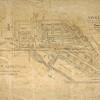Lost LA Field Notes: What’s the Authentic Yosemite Experience?

Union Bank is a proud sponsor of Lost LA. 
In the Season 3 premiere of Lost LA, that question guides our journey through the history of one of California’s most iconic landscapes.
Yosemite National Park has become for me — as it has for many Southern Californians — an annual destination. I’ve enjoyed calf-busting treks through the high country, decadent dinners at the Ahwahnee, and moonlight walks through a frosty Stoneman Meadow. I treasure these Yosemite memories, but I’m also aware that writers, photographers, and painters who came before me shaped the way I experience the park. Is it possible — or even worthwhile — to tune out the rapturous prose of John Muir or the photographs of Ansel Adams as we gaze upon Yosemite’s granite cliffs?
It may be a fools’ errand, but in this episode we search for an authentic communion with Yosemite. We meet Lee Stetson, an actor, scholar, and John Muir impersonator, who shines light on the park’s most famous trekker. We recount the tale of an epic battle between park rangers and hippies. And we hear from the descendants of Yosemite’s original inhabitants, who offer a very different perspective on the land and its management.

More on Yosemite and Lost LA
Meeting Shelton Johnson
Meeting Yosemite park ranger Shelton Johnson was one of the highlights of this shoot. Shelton is something of a celebrity in national park circles. Like anyone who saw Ken Burns’ “The National Parks: America’s Best Idea,” I was transfixed by his eloquent words:
National parks provide a doorway into a transcendent experience—a sense of something that’s greater than yourself; a place that’s greater than yourself; a way of being that’s greater than yourself. And all you have to do is often pay an entrance fee. You pay that fee and you pass over that threshold into that national park and it’s a place that’s bigger than the name. It’s a history that’s more important than the framework within which we have established a relationship with the land or with our own history. So whenever someone enters a national park, it’s like going to another world. It is going to a wonderland. And I think that all people feel that transition. They feel that sense that they’ve gone to some place better than what they’ve left behind. But the irony is that where they’ve gone is the place where they’ve always been. It’s just now they understand it. Now they see it. Now they feel it. Because parks are like going home.
Naturally, as Shelton and our crew shared lunch at Degnan’s Deli after the shoot, a park visitor approached us sheepishly and asked Shelton if he was the ranger from the Ken Burns series. Shelton confirmed this, and the woman, clearly star-struck, proceeded to quote from the passage above, and added, “I think of those words every time I come to a national park.”
Escaping the crowds
When crowds swarm into Yosemite Valley, they often complain... about themselves. Packed shuttle buses, traffic jams on Southside Drive, congestion on the Mist Trail— all are common gripes. The mass of humanity can dampen my enthusiasm for Yosemite, too, but I’ve learned ways to avoid crowds:
- Visit in the winter. Snowstorms only enhance the valley’s beauty, and crowds are thin.
- Leave the valley and explore the rest of the park. If you’re traveling by car, drive over the scenic Tioga Road to subalpine Tuolomne Meadows. Or lace up your boots, pack a tent, and venture into the park’s 704,624 acres of congressionally designated wilderness. One of my favorite hikes took me over remote Red Peak Pass in the less-traveled southwestern portion of the Yosemite backcountry.
- Stray just 100 yards from anything paved. I stayed at the Yosemite Lodge during our shoot, and each morning I’d wake up early to run the Valley Loop Trail. Within seconds of leaving the lodge, I felt as if I had Yosemite Valley to myself—if you don’t count the many mule deer, hawks, and ground squirrels I encountered along the way.

Essential Reading
- Rebecca Solnit’s “Savage Dreams” (University of California Press, 1994) forever changed the way I think about Yosemite.
- Alfred Runte’s “Yosemite: The Embattled Wilderness” (University of Nebraska Press, 1993) is the best-researched single-volume history of the park.
- Edited by Lee Stetson, “The Wild Muir: Twenty-Two of John Muir’s Greatest Adventures” (Yosemite Association, 1994) is a rollicking collection of excerpts from Muir’s writings. The man was the extreme athlete of his age.
The Archives
Scheduling issues prevented us from actually shooting there, but the Yosemite Archives in El Portal were an essential resource as we developed the story for this episode.















